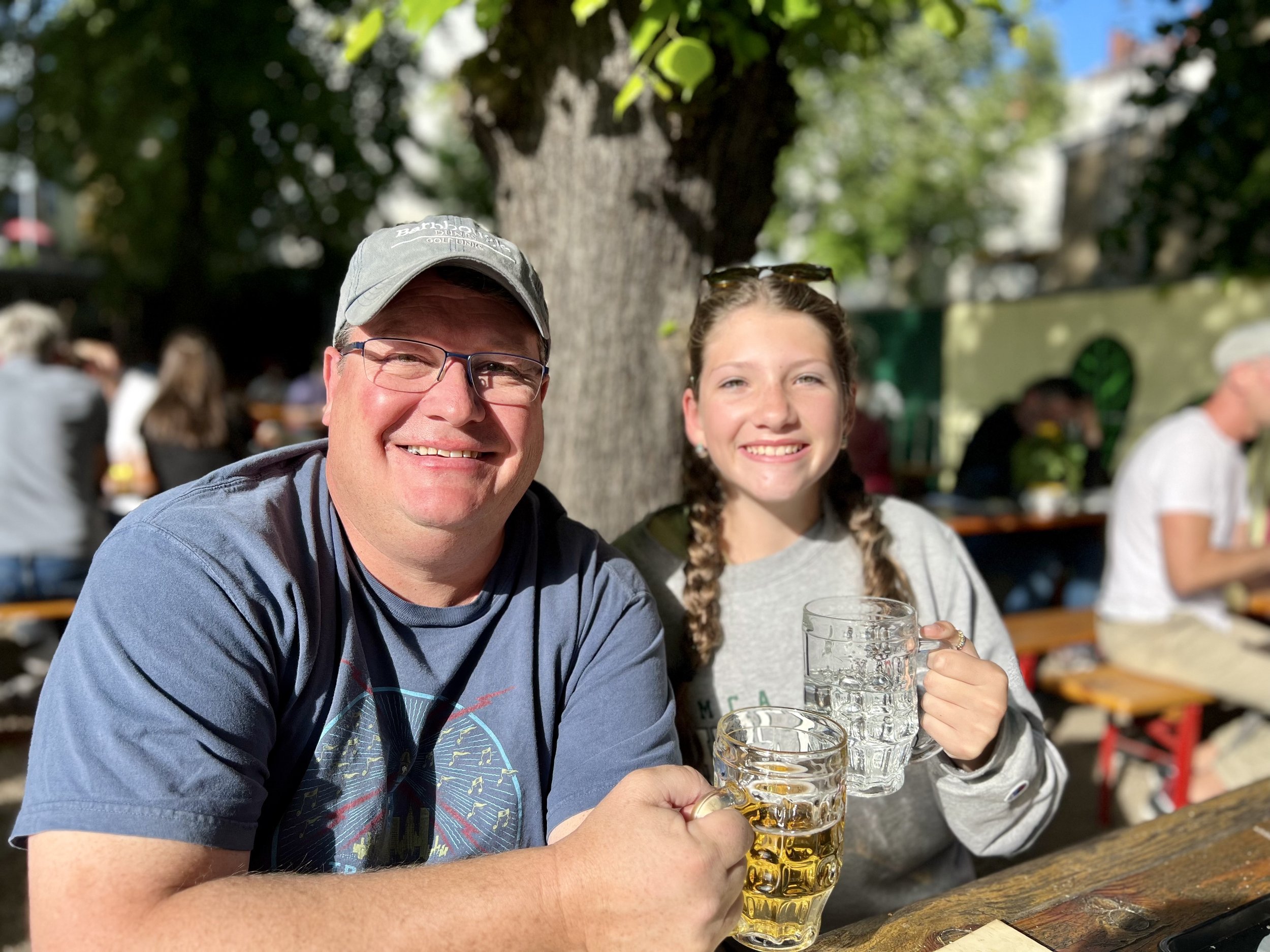BERLIN
I knew there was a reason I took German classes in college (just 5 years ago). It was more than just defying my father when he suggested that I learn Spanish. It was because the universe was telling me that some of my most favorite places on the planet that I had yet to discover are German-speaking countries.
Throughout Germany and Austria, I have absolutely loved eavesdropping on conversations happening in cafes, on sidewalks, and on trains. I have been reminded of the vocabulary I learned years ago, how to correctly conjugate verbs, and how my college professor threw us out of the classroom if we dared to speak a lick of English. I have used “entschuldigung,” “vielen dank,” and “gesundheit” contextually and appropriately. As someone who has only studied Latin and German in my school career, and who, before this trip, had never traveled to German-speaking countries, hearing this language spoken in the WILD has been THRILLING!
It was particularly thrilling in Berlin.
We visited the city on the most beautiful days of spring, where everything is green, the sun is shining, and there’s a certain optimism in the air. Neighbors greet each other in coffee shops, and strangers hold the door open for you at the store. Everyone is riding a bike, with kids or groceries or fresh flowers overflowing from its baskets or trailers. Dads are strapped with Baby Bjorns and moms are pushing strollers towards the playgrounds on a Friday night. Dance classes are happening along the riverfront and picnics are happening in the parks. Friends raise a glass at the Biergarten and children put on a magic show in our Airbnb courtyard. And the whole time – they’re speaking GERMAN, a language that exists in real life, not just in a textbook or a classroom.
I was wholly enamored with Berlin, which is why it’s so hard to reconcile its brutal history.
We were lucky to have an incredibly knowledgeable guide walk us through Berlin for FOUR hours on our first day. Through the city sites and monuments, Xavier told us how Jews were stripped of their education, professions, rights, dignity, and ultimately, their lives, in the most calculated, despicable way. And one of the ways it all started was by restricting access to information, by restricting what people could read. Nazis knew that knowledge was power, so they banned books.
One of our first stops was the site where Nazis burned 20,000 books in 1933. The site is now memorialized by an underground room whose walls are composed of empty shelves that could hold those 20,000 books. Standing in that spot, I felt sad and helpless, but mostly angry to think that there are people in this world who are still trying to ban books.
Our tour continued for the next several hours to showcase more of the horrific parts of Berlin’s history. We visited “Checkpoint Charlie” where our girls first learned about the “Death Strip.” We visited the Memorial to the Murdered Jews of Europe, where we heard heart wrenching stories of families torn apart by hateful extremists. We saw many places in the city where the Berlin Wall once stood, and we very briefly visited The Topography of Terror.
And then it was too much. Our hearts were breaking.
But also, it was not enough. There was so much to learn.
Xavier told us that Berlin has long been a city of tension – tension between Nazis and Jews, between Communism and Capitalism, between East and West. I felt that tension during our visit.
I was so grateful to learn about Berlin’s history, and then so grateful to have a break.
I needed to visit the memorials, but then I needed to push my kids on a swing.
I needed to cry at the museums and then laugh at the Biergarten.
Our visit in Berlin took quite an emotional toll on me. I hated its history and I loved all its present-day magic. I can’t wait to come back again.











